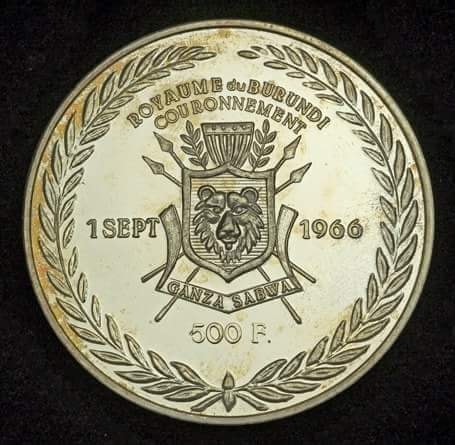The investiture of a king in Burundi, formerly known as the Kwimikwawas one of the most significant events in the kingdom's political and cultural life. Before colonization and the abolition of the monarchy in the 1960s, this ceremony played a key role in the organization of Burundian society. It was not only a symbolic passage of power, but also a key moment for strengthening ties between the country's different social strata and spiritual forces.
1. Burundi's Monarchical Context
Burundi had an ancient, well-structured monarchy. The king, or MwamiHe was both a political and spiritual leader, regarded as an intermediary between the divine and his people. The Burundian monarchy was hereditary, and each succession marked a new chapter in the kingdom's history. The Mwami was to protect the people, deliver justice, and ensure the prosperity of the land.
2. Preparations for the Investiture
The investiture of a king was no ordinary event. It required a long period of preparation and purification, both for the future king and for the customary and spiritual authorities involved in the process. The king had to go through several stages of purification, during which he withdrew from the rest of society to meditate and be "initiated" into the mysteries of kingship.
Notables, clan chiefs and royal priests also had a crucial role to play. They supervised the preparations and ensured that all rituals and protocols were respected, so that the ceremony could take place in a spiritually propitious setting.
3. The Investiture Ritual
The day of investiture was a solemn moment marked by a series of codified rituals. The ceremony often took place in a sacred place, such as a royal hill (ubwami), symbolizing the continuity and power of the royal line.
The most important part of the investiture was the imposition of the royal insignia. The Mwami received a spear, a symbol of power and protection, as well as a sacred drum called the Karyenda. This drum was not only a musical instrument, but also an object of great spiritual value, supposed to convey divine messages to the king. The Karyenda governed the country's political and social life, and its beat symbolized the king's authority over his subjects.
During this ceremony, the king also took oaths, pledging to protect his people, respect traditions and guarantee the peace and prosperity of the kingdom.
4. The Symbolism of Investiture
Investiture was much more than a simple transfer of political power. It symbolized the unity of the kingdom, the continuity of the royal lineage and the sacred bond between the King and the Queen. Mwami and the cosmic forces that governed the world. The king was invested with spiritual powers, which reinforced his legitimacy among his people.
The participation of different communities at the investiture was crucial. Each group, whether from the aristocracy or the common people, played a specific role, reinforcing the idea that the kingdom was a harmonious, well-structured whole.
5. Parties after the Investiture
Once the king was officially invested, celebrations were held over several days, with dancing, singing and feasting. These festivities enabled the people to celebrate the arrival of a new reign, bringing promise and renewal. Visit Mwami received tributes from all corners of the kingdom, and local chiefs came to renew their allegiance to the crown.
The festivities were also an opportunity for the new king to demonstrate his generosity by distributing goods, land or titles to his followers. This reinforced his image as a benevolent sovereign concerned with the well-being of his people.
6. The Legacy of Monarchy Today
Although the Burundian monarchy officially came to an end with the proclamation of the Republic in 1966, the rituals and symbolism of royal investiture remain engraved in the collective memory of the Burundian people. Respect for ancestral traditions and royal symbols remains strong, and many Burundians continue to see the former monarchy as a source of pride and national identity.
Investiture ceremonies, once synonymous with power and sacredness, recall the importance of royalty in Burundi's history and its central role in the organization of traditional society.
Conclusion
The investiture of a king in Burundi was a large-scale ceremony, filled with symbolism and rituals that recalled the connection between the Mwamiand spiritual forces. This ancestral rite, deeply rooted in Burundian culture, reflected both the richness of the country's traditions and the importance of the role played by the monarchy in building national identity.


There are no reviews yet. Be the first one to write one.